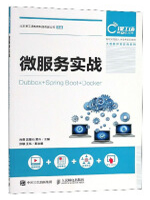给大家整理了springcloud相关的编程文章,网友郗哲圣根据主题投稿了本篇教程内容,涉及到spring、cloud、stream、异常处理、Spring Cloud Stream异常处理过程解析相关内容,已被449网友关注,内容中涉及的知识点可以在下方直接下载获取。
Spring Cloud Stream异常处理过程解析
应用处理
当消费者在处理接收到的消息时,有可能会由于某些原因而抛出异常。若希望对抛出来的异常进行处理的话,就需要采取一些异常处理手段,异常处理的方式可分为三种:应用层面的处理、系统层面的处理以及通过RetryTemplate进行处理。
本小节先来介绍较为常用的应用层面的异常处理方式,该方式又细分为局部处理和全局处理。
局部处理
Stream相关的配置内容如下:
spring:
cloud:
stream:
rocketmq:
binder:
name-server: 192.168.190.129:9876
bindings:
input:
destination: stream-test-topic
group: binder-group
所谓局部处理就是针对指定的channel进行处理,需要定义一个处理异常的方法,并在该方法上添加@ServiceActivator注解,该注解有一个inputChannel属性,用于指定对哪个channel进行处理,格式为{destination}.{group}.errors。具体代码如下:
package com.zj.node.usercenter.rocketmq;
import lombok.extern.slf4j.Slf4j;
import org.springframework.cloud.stream.annotation.StreamListener;
import org.springframework.cloud.stream.messaging.Sink;
import org.springframework.integration.annotation.ServiceActivator;
import org.springframework.messaging.Message;
import org.springframework.messaging.support.ErrorMessage;
import org.springframework.stereotype.Service;
/**
* 消费者
*
* @author 01
* @date 2019-08-10
**/
@Slf4j
@Service
public class TestStreamConsumer {
@StreamListener(Sink.INPUT)
public void receive1(String messageBody) {
log.info("消费消息,messageBody = {}", messageBody);
throw new IllegalArgumentException("参数错误");
}
/**
* 处理局部异常的方法
*
* @param errorMessage 异常消息对象
*/
@ServiceActivator(
// 通过特定的格式指定处理哪个channel的异常
inputChannel = "stream-test-topic.binder-group.errors"
)
public void handleError(ErrorMessage errorMessage) {
// 获取异常对象
Throwable errorMessagePayload = errorMessage.getPayload();
log.error("发生异常", errorMessagePayload);
// 获取消息体
Message<?> originalMessage = errorMessage.getOriginalMessage();
if (originalMessage != null) {
log.error("消息体: {}", originalMessage.getPayload());
} else {
log.error("消息体为空");
}
}
}
全局处理
全局处理则是可以处理所有channel抛出来的异常,所有的channel抛出异常后会生成一个ErrorMessage对象,即错误消息。错误消息会被放到一个专门的channel里,这个channel就是errorChannel。所以通过监听errorChannel就可以实现全局异常的处理。具体代码如下:
@StreamListener(Sink.INPUT)
public void receive1(String messageBody) {
log.info("消费消息,messageBody = {}", messageBody);
throw new IllegalArgumentException("参数错误");
}
/**
* 处理全局异常的方法
*
* @param errorMessage 异常消息对象
*/
@StreamListener("errorChannel")
public void handleError(ErrorMessage errorMessage) {
log.error("发生异常. errorMessage = {}", errorMessage);
}
系统处理
系统处理方式,因消息中间件的不同而异。如果应用层面没有配置错误处理,那么error将会被传播给binder,而binder则会将error回传给消息中间件。消息中间件可以选择:
- 丢弃消息:错误消息将被丢弃。虽然在某些情况下可以接受,但这种方式一般不适用于生产
- requeue(重新排队,从而重新处理)
- 将失败的消息发送给DLQ(死信队列)
DLQ
目前RabbitMQ对DLQ的支持比较好,这里以RabbitMQ为例,只需要添加DLQ相关的配置:
spring:
cloud:
stream:
bindings:
input:
destination: stream-test-topic
group: binder-group
rabbit:
bindings:
input:
consumer:
# 自动将失败的消息发送给DLQ
auto-bind-dlq: true
消息消费失败后,就会放入死信队列。在控制台操作一下,即可将死信放回消息队列,这样,客户端就可以重新处理。
如果想获取原始错误的异常堆栈,可添加如下配置:
spring:
cloud:
stream:
rabbit:
bindings:
input:
consumer:
republish-to-dlq: true
requeue
Rabbit及Kafka的binder依赖RetryTemplate实现消息重试,从而提升消息处理的成功率。然而,如果设置了spring.cloud.stream.bindings.input.consumer.max-attempts=1 ,那么RetryTemplate则不会再重试。此时可以通过requeue方式来处理异常。
需要添加如下配置:
# 默认是3,设为1则禁用重试 spring.cloud.stream.bindings.<input channel名称>.consumer.max-attempts=1 # 表示是否要requeue被拒绝的消息(即:requeue处理失败的消息) spring.cloud.stream.rabbit.bindings.input.consumer.requeue-rejected=true
这样,失败的消息将会被重新提交到同一个handler进行处理,直到handler抛出 AmqpRejectAndDontRequeueException 异常为止。
RetryTemplate
RetryTemplate主要用于实现消息重试,也是错误处理的一种手段。有两种配置方式,一种是通过配置文件进行配置,如下示例:
spring:
cloud:
stream:
bindings:
<input channel名称>:
consumer:
# 最多尝试处理几次,默认3
maxAttempts: 3
# 重试时初始避退间隔,单位毫秒,默认1000
backOffInitialInterval: 1000
# 重试时最大避退间隔,单位毫秒,默认10000
backOffMaxInterval: 10000
# 避退乘数,默认2.0
backOffMultiplier: 2.0
# 当listen抛出retryableExceptions未列出的异常时,是否要重试
defaultRetryable: true
# 异常是否允许重试的map映射
retryableExceptions:
java.lang.RuntimeException: true
java.lang.IllegalStateException: false
另一种则是通过代码配置,在多数场景下,使用配置文件定制重试行为都是可以满足需求的,但配置文件里支持的配置项可能无法满足一些复杂需求。此时可使用代码方式配置RetryTemplate,如下示例:
@Configuration
class RetryConfiguration {
@StreamRetryTemplate
public RetryTemplate sinkConsumerRetryTemplate() {
RetryTemplate retryTemplate = new RetryTemplate();
retryTemplate.setRetryPolicy(retryPolicy());
retryTemplate.setBackOffPolicy(backOffPolicy());
return retryTemplate;
}
private ExceptionClassifierRetryPolicy retryPolicy() {
BinaryExceptionClassifier keepRetryingClassifier = new BinaryExceptionClassifier(
Collections.singletonList(IllegalAccessException.class
));
keepRetryingClassifier.setTraverseCauses(true);
SimpleRetryPolicy simpleRetryPolicy = new SimpleRetryPolicy(3);
AlwaysRetryPolicy alwaysRetryPolicy = new AlwaysRetryPolicy();
ExceptionClassifierRetryPolicy retryPolicy = new ExceptionClassifierRetryPolicy();
retryPolicy.setExceptionClassifier(
classifiable -> keepRetryingClassifier.classify(classifiable) ?
alwaysRetryPolicy : simpleRetryPolicy);
return retryPolicy;
}
private FixedBackOffPolicy backOffPolicy() {
final FixedBackOffPolicy backOffPolicy = new FixedBackOffPolicy();
backOffPolicy.setBackOffPeriod(2);
return backOffPolicy;
}
}
最后还需要添加一段配置:
spring.cloud.stream.bindings.<input channel名称>.consumer.retry-template-name=myRetryTemplate
注:Spring Cloud Stream 2.2才支持设置retry-template-name
以上就是本文的全部内容,希望对大家的学习有所帮助,也希望大家多多支持码农之家。


















